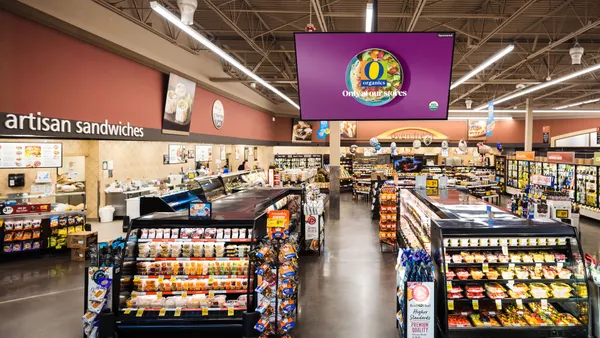Brief:
- Mobile ads start triggering an emotional response in consumers in less than half a second, pointing to how brands must develop a "one-second strategy" for their creative and media-buying efforts, according to a study by brain researcher Neurons for the Mobile Marketing Association. Its research found that the human brain needs 400 milliseconds to see and react emotionally to mobile ads.
- Consumers reacted more slowly to ads seen on desktop computers, which took two to three seconds to pose the same emotional effect. The researchers used eye-tracking and EEG monitoring to measure the response of 900 participants in the study, per The Wall Street Journal.
- Well-known brands triggered the quickest response, while video ads were twice as likely to stimulate an emotional response than static images at faster exposure speeds of less than 0.7 seconds, the study found.
Insight:
The MMA's study on ad recognition may lead more brands and their creative agencies to reconsider how to improve their mobile marketing strategies for maximum effect. The findings are also likely to invite more debate about viewability standards that determine whether audiences have ample chance to see an ad, and how much an advertiser should pay for that visual impression. The association said more research is needed to find value in ad inventory that's currently shorter than the one-second viewability standard for static images and the two-second minimum for video.
Recommendations for developing an effective "one-second strategy" by the MMA report include specific visuals that capture the brain's attention and the importance of tapping into the "emotional brain" immediately. The most common strategies of getting people's attention include displaying initial images of human faces looking directly at the camera or the product, using contrasting colors to make an image pop, showing strong emotions and delivering more complex or more simple compositions than surrounding news feeds, the Journal reported.
Familiar brands like 1-800-Flowers and Chipotle Mexican Grill that trigger quicker responses are evaluating how MMA's finding affect their strategies. 1-800-Flowers is considering whether to re-evaluate its ad placements that don't meet industry standards for viewability. Amit Shah, chief marketing officer at the online floral retailer, told the Journal that the MMA's research suggests that mobile ads that were viewed for shorter periods may not necessarily be considered ineffective. Tressie Lieberman, Chipotle's vice president for digital marketing and off-premise, said the fast casual chain's agencies and employees will develop strategies based on the MMA's findings.
The MMA's findings come amid a surge in mobile advertising. Spending on mobile ads is set to make up 43% of the total U.S. ad market by 2020, exceeding total spending on all traditional media, eMarketer forecasts. Mobile last year accounted for $76.17 billion of ad spending to surpass TV's $69.87 billion, print's $18.74 billion, radio's $14.41 billion and out-of-home's $8.08 billion. Mobile ad spending will continue to grow to $141.36 billion in 2022, more than double that of TV at $68.13 billion, per eMarketer.










